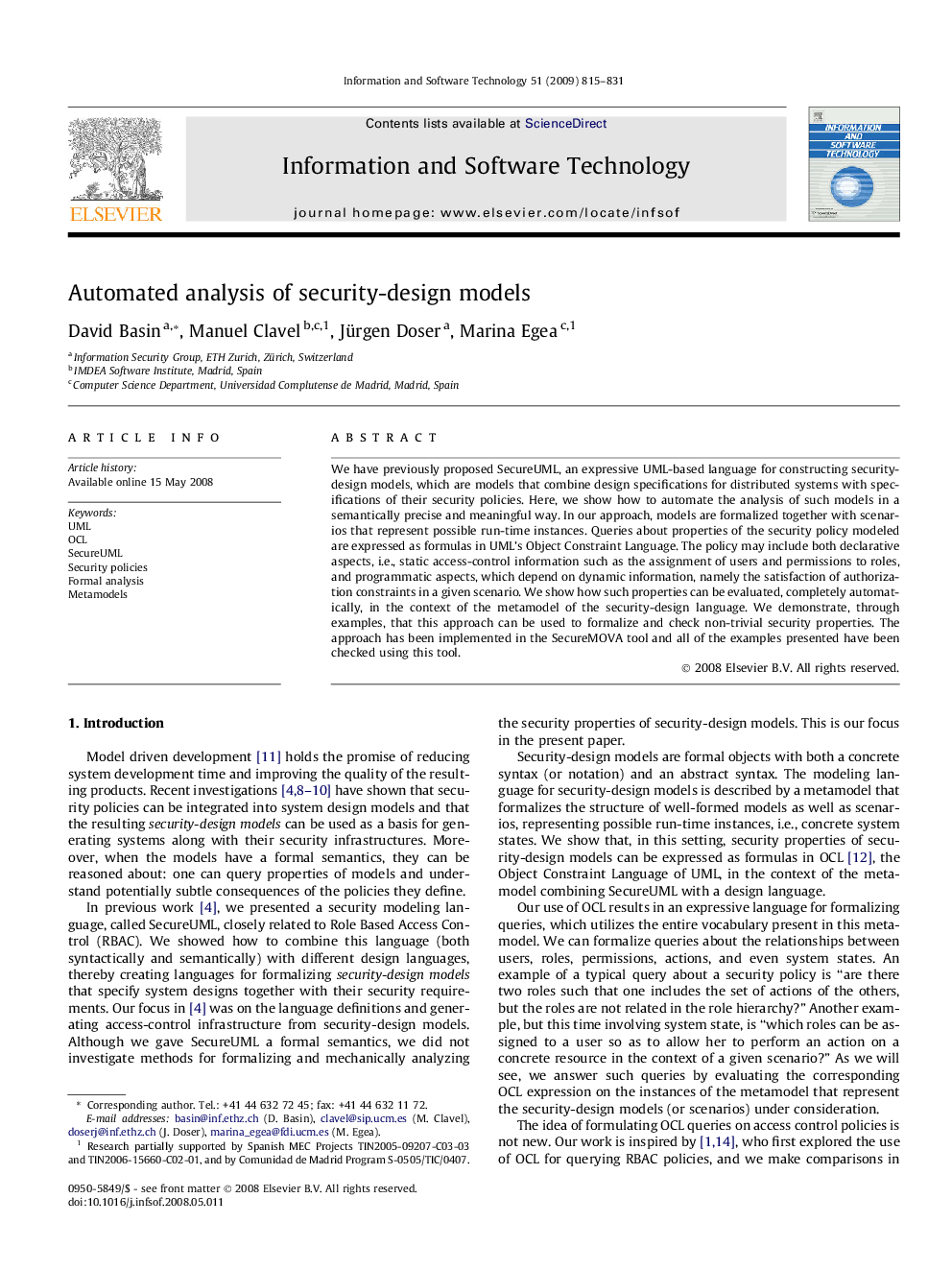| Article ID | Journal | Published Year | Pages | File Type |
|---|---|---|---|---|
| 549910 | Information and Software Technology | 2009 | 17 Pages |
We have previously proposed SecureUML, an expressive UML-based language for constructing security-design models, which are models that combine design specifications for distributed systems with specifications of their security policies. Here, we show how to automate the analysis of such models in a semantically precise and meaningful way. In our approach, models are formalized together with scenarios that represent possible run-time instances. Queries about properties of the security policy modeled are expressed as formulas in UML’s Object Constraint Language. The policy may include both declarative aspects, i.e., static access-control information such as the assignment of users and permissions to roles, and programmatic aspects, which depend on dynamic information, namely the satisfaction of authorization constraints in a given scenario. We show how such properties can be evaluated, completely automatically, in the context of the metamodel of the security-design language. We demonstrate, through examples, that this approach can be used to formalize and check non-trivial security properties. The approach has been implemented in the SecureMOVA tool and all of the examples presented have been checked using this tool.
